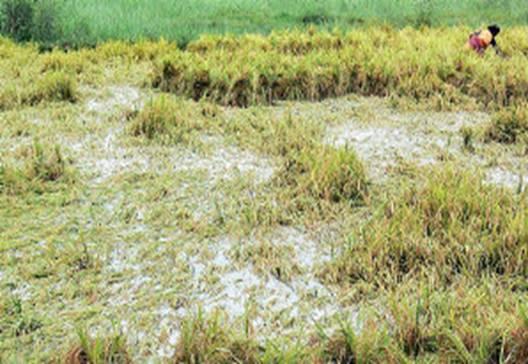- July 14, 2023
- By admin
- Challenge of Agriculture
- (0) Comment Post Views : 8788

Introduction:
Natural disasters have always posed significant challenges to the global agricultural sector, affecting food production, supply chains, and livelihoods. The year 2023 witnessed devastating floods in various parts of the world, leaving a lasting impact on agriculture. In this blog, we will explore the consequences of the 2023 floods on global agriculture and shed light on the measures taken to mitigate their effects.
Crop Losses and Reduced Yields:
Floods have a detrimental impact on agricultural production, often resulting in significant crop losses and reduced yields. Excessive water submerges fields, leading to the destruction of standing crops and soil erosion. The inundation also disrupts nutrient balance and affects root development, thereby hampering plant growth and productivity. As a result, farmers face financial hardships, food shortages, and potential increases in food prices.
Disrupted Supply Chains:
The aftermath of floods often disrupts transportation networks, making it challenging to move agricultural products from farms to markets. Roads and bridges may be damaged or rendered impassable, hindering the timely delivery of produce. The disruption in supply chains further amplifies food scarcity and drives up prices, impacting both farmers and consumers.
Livelihood Challenges:
The floods not only affect crop production but also have a profound impact on the livelihoods of farming communities. Farmers may lose their entire investment, equipment, and infrastructure, pushing them into debt and poverty. Displaced families face the daunting task of rebuilding their lives and agricultural operations from scratch.
Mitigating Measures:
In the face of such challenges, global efforts are being made to mitigate the impact of floods on agriculture. Governments, international organizations, and non-governmental organizations collaborate to provide emergency relief, including food aid, financial assistance, and agricultural inputs, to affected farmers. Improved early warning systems and disaster preparedness plans help communities evacuate in a timely manner, reducing the risk of casualties.
Furthermore, investments in climate-resilient agriculture, such as the promotion of flood-tolerant crop varieties and conservation agriculture practices, can help farmers adapt to changing climatic conditions and minimize the impact of future floods.
Conclusion:
The 2023 floods left a significant imprint on global agriculture, causing crop losses, disrupting supply chains, and challenging the livelihoods of farmers worldwide. However, concerted efforts to mitigate the effects of floods on agriculture and improve resilience in the face of climate change offer hope for a more sustainable and secure food future. By investing in preventive measures, early warning systems, and climate-smart agricultural practices, we can protect both farmers and the global food supply chain from the devastating consequences of floods and other natural disasters.
Related posts:
No related posts.

